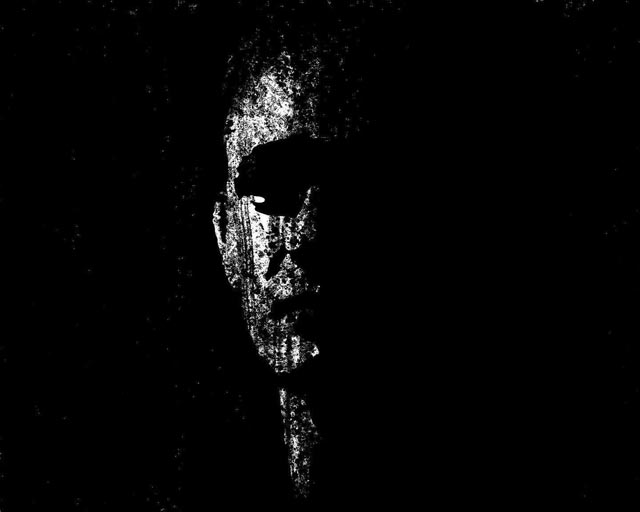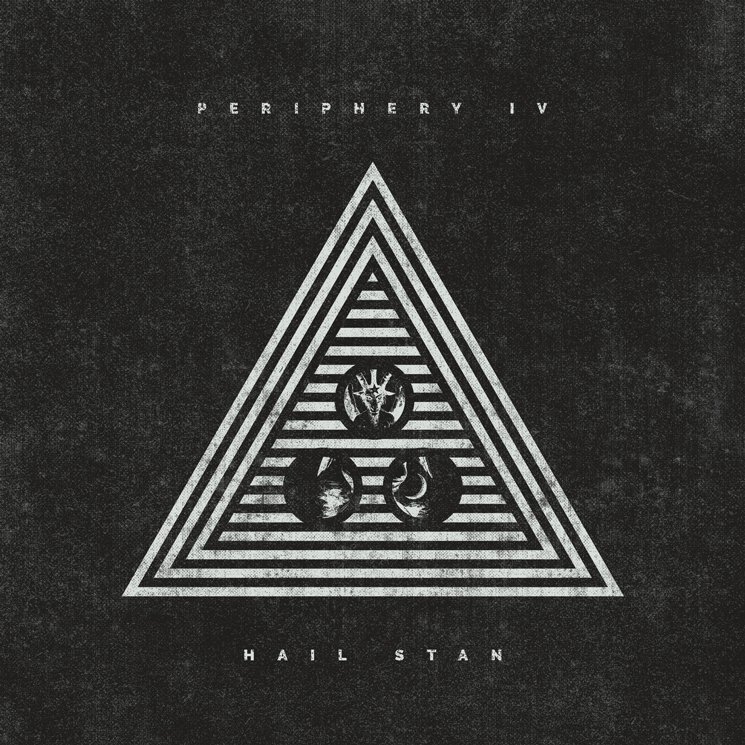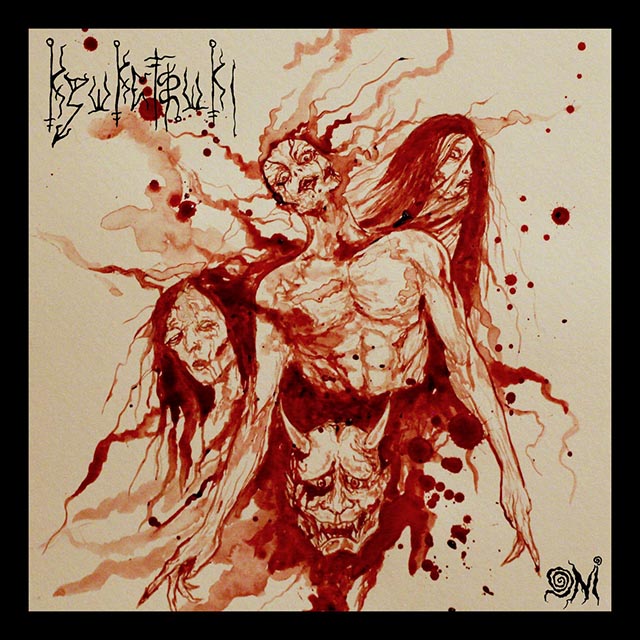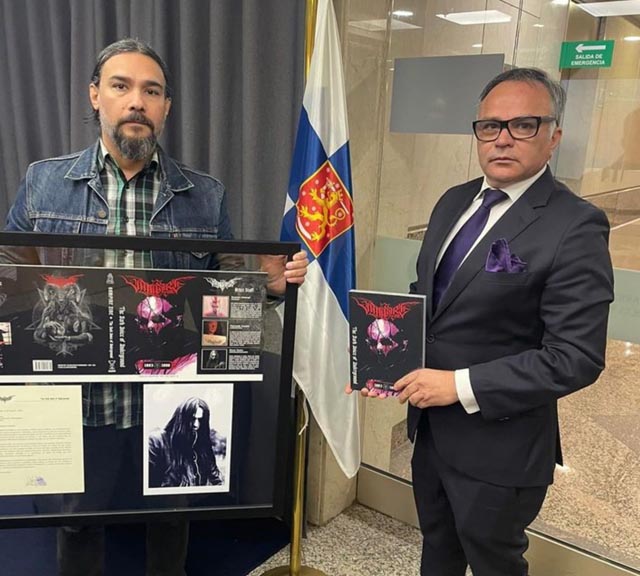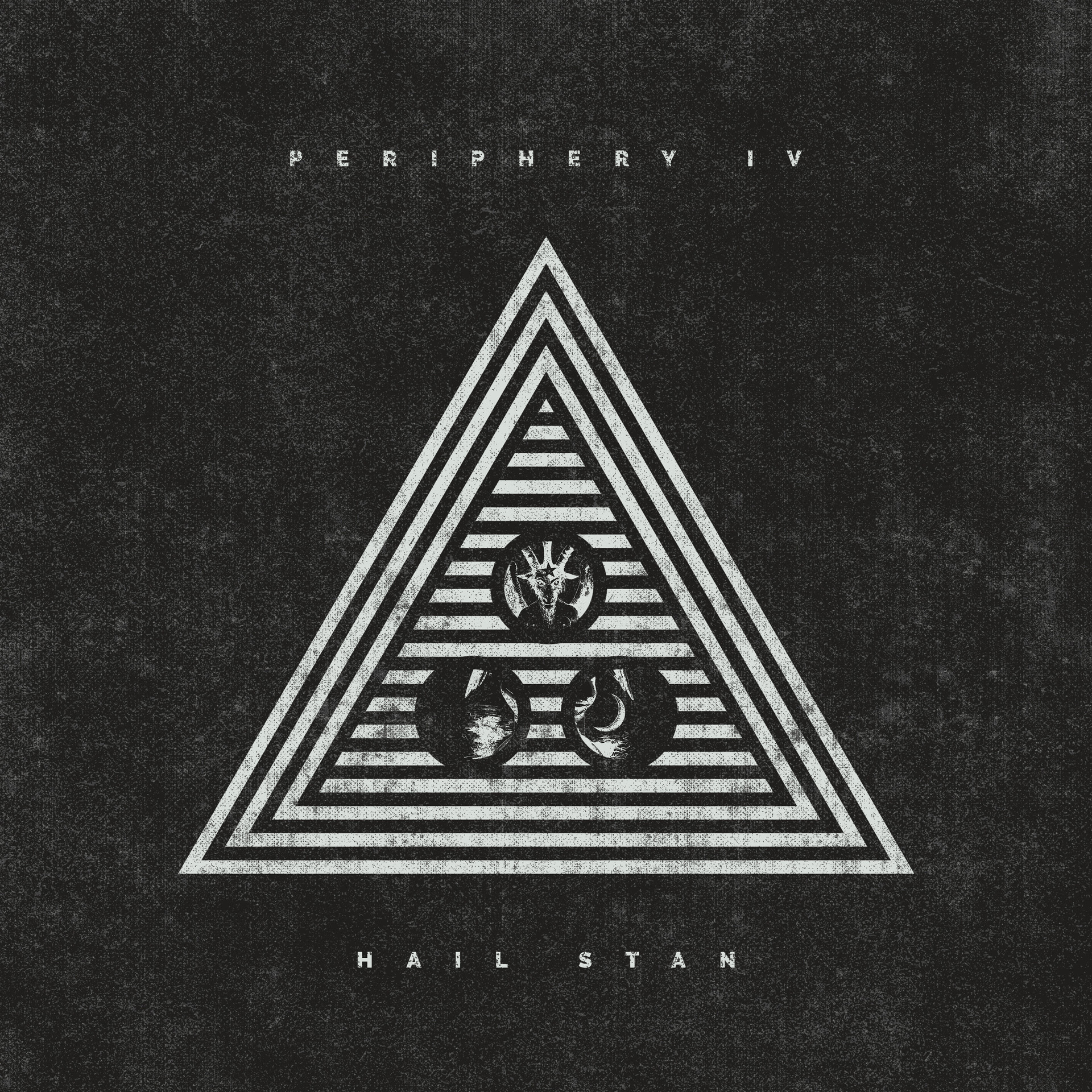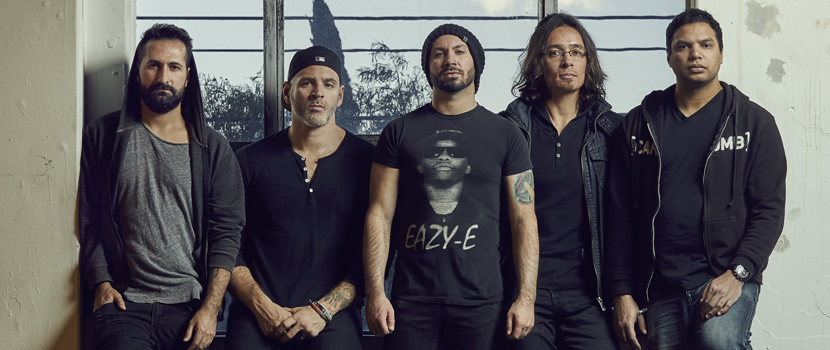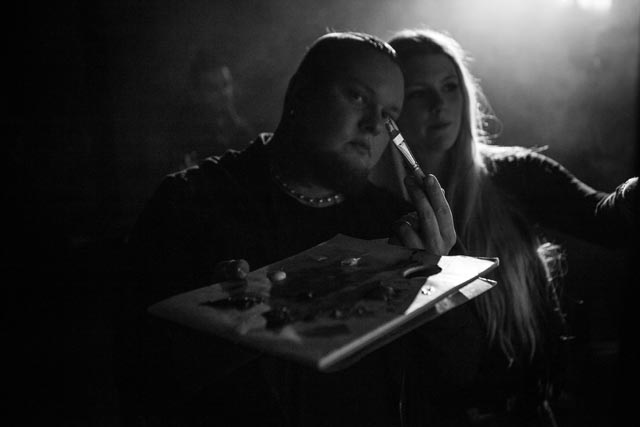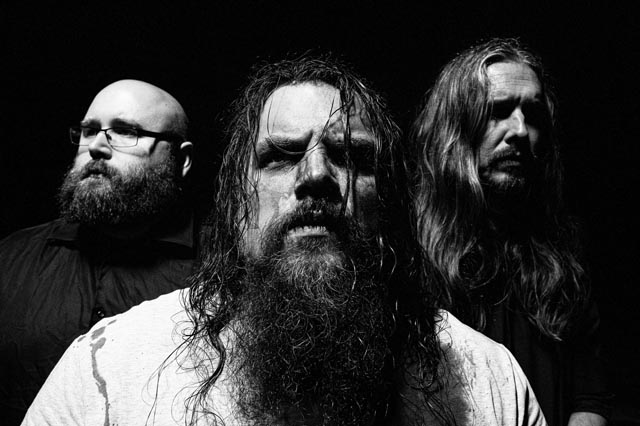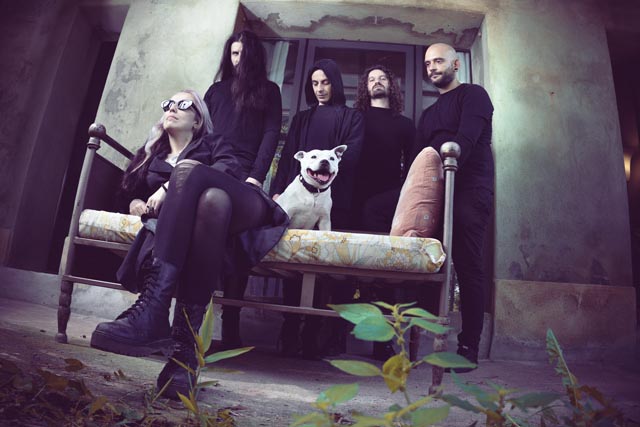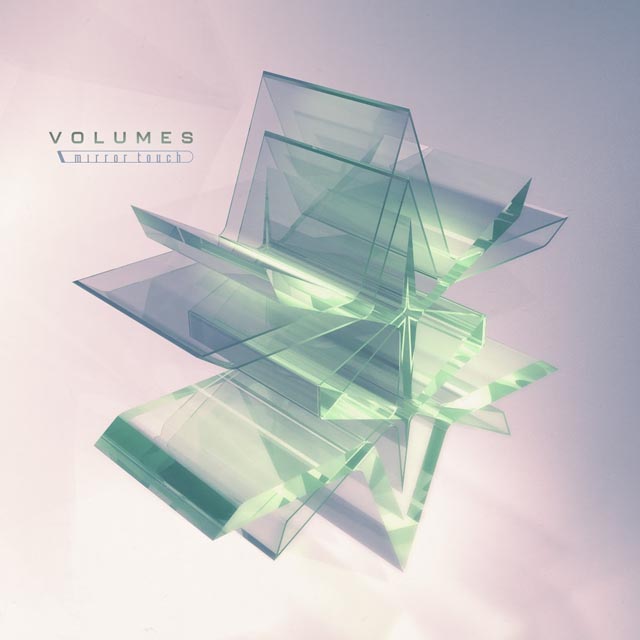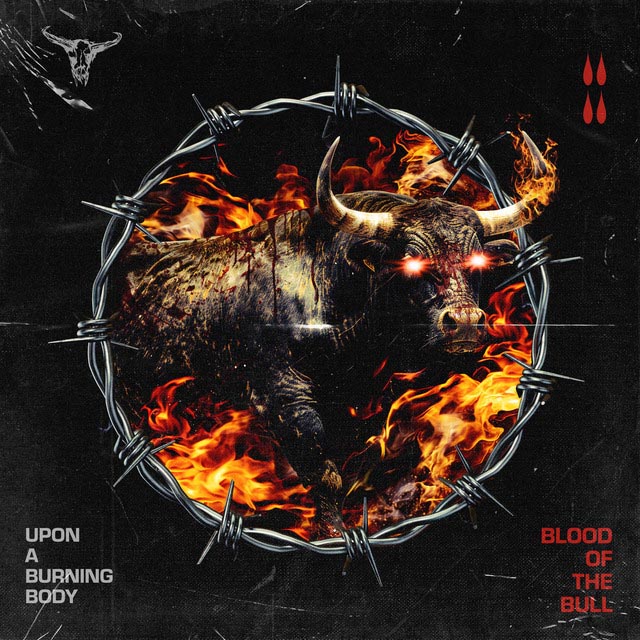“Stan represents the true meaning of pain in Art, his work reflects on how we cope with trauma, and anyone can relate to it.” ~ Maxime Taccardi
The brilliant “Stan Dark Art,” Stanislav Krawczyk, has been rightly referred to by the esteemed Chet Zar as “one of the most important artists of our time.” Born in Ukraine, Stan is a Hollywood-based luminary of Polish descent with a broad international fanbase. His visual art has been exhibited alongside Zar’s as well as pieces by H.R. Giger, Paul Booth, Vincent Castiglia, etc. Stan has joined forces with black metal pioneers from the top echelon of the genre’s elite, such as the ever-enigmatic Beherit and Xasthur — a true testament to the power of his drawings to communicate with fellow greats, incredibly discerning eyes without tolerance for anything but absolute authenticity. Remarkably, a 244-page metal publication for which Stan provided the cover and other works, Vampire Zine: The Dark Voice of Underground, was celebrated this August on different days at the Norwegian, Finnish, Danish, and Swedish Embassies in Chile respectively. Similar events are sure to follow.
Those familiar with Stan’s work know that it is intimately bound with his struggle with cerebral palsy. As Stan writes in his magnificent book of art and poetic reflections, Sketches of Pain: “Cerebral palsy is endless pain for me, sometimes attacks of pain are very strong like thousands of needles tearing my body…” Thus, one might be tempted to recall the famous line penned by Wittgenstein: “Whereof one cannot speak, thereof one must be silent.” Stan’s philosophy, however, provides a solution, enabling him to transform those aforementioned needles into quills: “Everything that I had to go through cannot be described in words, only with the help of a drawing is it possible to convey the depths of PAIN!!!!!” Verily, Stan’s art expresses the bottomless horror that leaves one open-mouthed and speechless while searching for volumes-worth of utterances.
Yet, Stan is also a master of erotica. His erotic art has appeared in Playboy Ukraine, for example. Whether depicting his female models, musicians, or the captivating though disturbing figures of nightmares, Stan excels at perfectly capturing the varied essences of his subjects in all of their nuanced particularities. In this respect, Stan seems to possess the penetrating gaze of a psychologist combined with a sorcerer’s ability to imbue magic within his charismatic renderings. It is certain that through the years, Stan will surprise us with new undertakings, innovations, collaborations, and by garnering numerous types of additional recognitions.
Of course, we were honored to have the opportunity to speak with Stan himself — not only does his art rouse the full gamut of emotions and thoughts, but he belongs to the minuscule, and in fact almost chimerical, ring of truly inspiring individuals. His creations will move even the most curmudgeonly souls like yours truly. Without further ado, we present our conversation with the dark artist.
Obviously, Sketches of Pain, which was published in 2020, is phenomenal. Is there anything that you would like to share about the process of making the book?
In the beginning, for me, every publication or every experience of showing my art somewhere was shocking because, in my own country, I was rejected and forbidden. I thought that nobody would ever be interested in such stuff, especially during that time when I was in Ukraine. Maybe today, it’s a little bit different there. When I came here, I took my sketches that were from the hospital. They were not for show, not for the public. It was my private collection. The editor and collector Thomas Negovan took a look at this portfolio and suggested that I publish or show these drawings sometime, but it was just an idea. I never believed that it was possible. He helped me to promote the book, make a Kickstarter, find money for it, and, of course, publish it. And for me, it was a shock because this was not typical art for this publisher, that’s my opinion. Thomas was basically focused on Art Nouveau, old German artists like that, and other things, never anything close to dark art. It completely blew my mind that somebody was interested in such a type of art and even my sketches that I drew for myself. It felt like nobody would ever see these sketches, only me. They are my personal experience, my personal suffering. They’re like notes from when you try to express your feelings, because half of my life, I was in Ukraine, and half of my life, I was in hospitals. So, I try somehow to communicate with myself. But I hope in the future, I will have the opportunity to create not only an artbook but some kind of biography of my life. I need to find a good time for that.
That would be amazing, and I believe in an interview you mentioned that you hope to have a documentary made about your life.
Yes, I have such a plan.
I can’t wait to see that come to fruition. Your work has been exhibited beside Vincent Castiglia’s, for instance, and I must say that Vincent’s documentary was great.
Yes, I know John Borowski, the director, very well. I know Vincent. Actually, Vincent was one of the first people who helped me, who recognized me and introduced me. It was my first meeting with a big artist. I believe 10 years ago, maybe more, I was at a Giger anniversary in Switzerland, and Vincent was there. I was so shocked because it was only my first step, and I was only just a fanboy — I traveled to Switzerland two times: the first, again, basically as a fanboy, the second, as an artist. I was kind of lost and scared because there were so many popular dark artists around me. So, it was amazing that, at first, Vincent kind of protected me and introduced me to people. After that meeting, I decided to move to Los Angeles. Very quickly, I realized that this circle of dark artists is my place.
Do you have any reflections on your journey to Hollywood? That must have been quite a change, especially given the fact that you’ve stated that it was hard in Ukraine.
It was spontaneous, but I believe I tried somehow to be somewhere else because I realized that I could not be in a place anymore where everything is suffocated. I mean, as an artist, you can’t have life without expression. And when I was in Switzerland for the first time and saw how it looked, how it works, and how the promotion is around dark art and metal music generally, I felt like I was moving in the right direction. Ukraine, at that time, was so isolated, and still, right now, black metal and dark art are not like mainstream stuff. They’re very underground. And when I lived in Ukraine, it was very dangerous to be involved with them. You needed to explain how it worked. So, I’m not like that — I need to be more of a free person. I don’t like to be in an enclosed system. And after the hospital, I was lost, and I lost so much. So, I wanted to escape somehow. I tried to go to Germany, and Germany was no more interested in dark art at that time. Los Angeles was not plan B. I never even dreamed about that. The main trigger was that I signed a contract with an Australian label, and I was in such a position that they couldn’t pay me because the Ukrainian system was so outside of the rest of the world. I couldn’t even get money. That was, for me, like the last straw. I couldn’t be in that place anymore. And somehow, I just found a gallery. The gallery sent me a contract, and I moved here. And, of course, there was war happening. Everything in my life just moved me in this direction. So, I escaped from a prison of people who didn’t understand me, war, and everything in my life. After a small show, I had a big one in Santa Monica. After all of this experience, I have maybe more than 50 shows in Germany, Spain, and Switzerland. In Switzerland, I think, it was Vincent’s circle and then the people around me. It was very different. It was erotic art, and the show was in Zürich. And, of course, it was never possible in my country. If I stayed, I don’t know what would have been next.
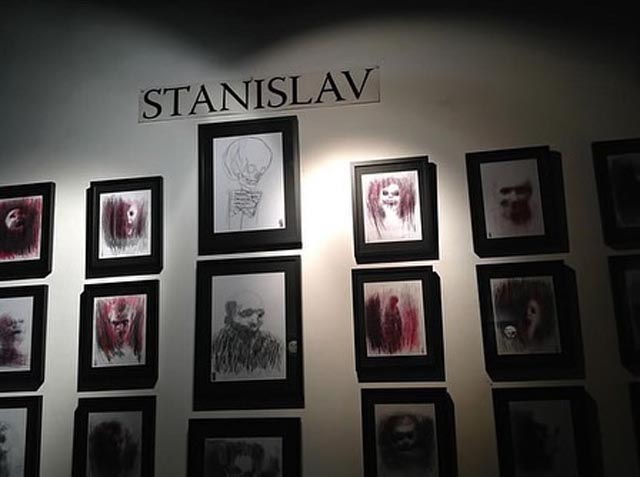
You identify as an American artist, right?
Everything that I ever did that has been exhibited is American-made. And most of what I have done has been for artists here like Scott. I believe that if I had not moved to America, I never would have done anything with any galleries. I even make stuff that is considered very dark for the conservative part of America.
Scott is an absolute icon, one of my favorites. And your art for Inevitably Dark — the album, book, singles, etc. — is magnificent. So, please tell me about collaborating with Scott.
Again, I will tell you that when I was in the hospital, I wanted to be in a different place. I tried to listen to this music, but people would tell me that I’m a very strange person if I wanted to listen to Xasthur. Of course, it was about the main feeling — if my art will be drawn, if horror will be drawn, what exactly will it look like?! So, if my art would have a different form, it would be Scott’s music. It was my main dream. And when you repeat something to yourself again and again, maybe it will become true. But I never dreamt that far ahead. I never thought we could meet. I just drew, and my main inspiration was his first album. It was the first spark in my head showing me what exactly I wanted to do after my hospital experience, what exactly my visual style would look like. And Scott just texted me. It was like very fast. I believe he saw my drawing. And this blood collaboration, his blood on my art, it’s like his music exists in my art, and my art exists in his music. So, if you have a problem understanding my art, you can listen to Xasthur. From the mix of the two, maybe you will understand the whole plot. Art is about emotions.
You’ve named Nuclear Holocausto as one of your heroes growing up, which made me really happy. Needless to say, your cover for Beherit’s Bardo Exist is fantastic. Could you comment on your work with Holocausto and also how you discovered his music?
How I discovered it — I was like a fanboy, of course. It’s like European next-level stuff. You know, all the stuff in my life has been spontaneous. I can’t even remember how I met him, but it was very fast. When he saw my portfolio… I believe that I texted him, or he texted me. I can’t be sure, but I believe he had different long-term plans and not to do any album. And for me, it was like a miracle that such a person, such an enigma, such a ghost, texted me. And I realized: “Okay, this is him.” And he was like: “I want to create a new album that’s not even close to what I’ve done before.” I was shocked, and I was so happy. I told him: “Take anything you want, and I will draw you this picture or this picture.” He’s the nicest person in the industry. He has a dark vision. He has a very big fanbase. But he’s not a social network person at all. Instagram is difficult for him, and there are so many imposters, people who create fake Instagram pages. He never knows how many fake accounts there are. So, it was a big miracle in my life. It was a big step from underground black metal to high black metal. I will always be grateful to Scott and Marko. Everything that I did with music is because of Marko — he made this decision to give my illustration a different life, I believe. If it will be in some museums in the future, I will be very glad. I would be happy if I could be in a Norwegian museum or something like that.

I think that your art will definitely have a place in museums one day. You have mentioned that Mayhem, Gorgoroth, Possessed, and Death are bands that you also appreciate. Are there any other groups that you would like to add to the list?
I’m a big fan of Acheron. I’m a big fan of every dark philosophy and every Satanic philosophy. I’m a big fan of Anton Lavey. Everyone from the black metal community can kill me right now. Yeah, I like it. And I’m a big fan of Lifelover. I’m a big fan of Swedish black metal. I’m a big fan of Silencer. It was my guilty pleasure, maybe. I know that many people try to find new forms of expression and new experiences in black metal and music, but I’m a very true person. I’m not into new stuff. So, if you ask me what’s playing in my head mostly, it’s Lifelover. Xasthur! Old Xasthur all the time and Lifelover.
I love both. It was quite a huge honor that Vampire Zine: The Dark Voice of Underground, for which you created the cover and other works, was celebrated in Chile at the Norwegian, Finnish, Danish, and Swedish Embassies in separate ceremonies. How do you feel about the fact that it was just recognized in that glorious and official manner?
You know, when I was a kid, I didn’t even have the opportunity to have similar types of posters around me, so I was kind of always in my head. All I could do was just see this style of darkness in my drawings. It was a miracle for me, some kind of beyond-dream, that the editor and creator of this zine, Christian [Ortiz Olivera], admires my art. It was not only friendship, we collaborate as artists. Holding this book in my hands was like: “I’m part of this black metal history, this black metal legend.” It’s very important to me, and it was a very big deal in general. I’m always thinking back to the time when nobody knew about me, and I never even dreamed about such changes in my life. I will always be grateful to Christian for helping me, promoting me. And I hope there will be more coming soon. It’s not only about Norway, Denmark, Finland, or Sweden — it will be everywhere.
I agree. Can you take me through what it was like to contribute to the book?
You ask me about some type of darkness and reflection, and I will try to find a way to answer. When I’m in some sort of show, I always try to take my book and card, or a little poster that I sign for fans, and everyone tries to ask me about my inspiration or how it works: “Explain, please.” I can’t even explain because we all have our own devil-revelation or darkness-revelation. Someone commented that I draw Marko. No, I draw darkness. So, if you ask me, “What is this exactly?!,” I can’t answer because every dark experience for me is like a dark trip. I can only show. I can only draw on the paper. But for myself, it’s a big mystery. I can’t explain. If I was not an artist but a writer, maybe somehow I would try to. It’s like Giger told me: “If you believe in darkness, you will see the beautiful in this one.” If not, you won’t like it.” It’s the same. In short, we’re crazy people, and we see in darkness the beautiful.
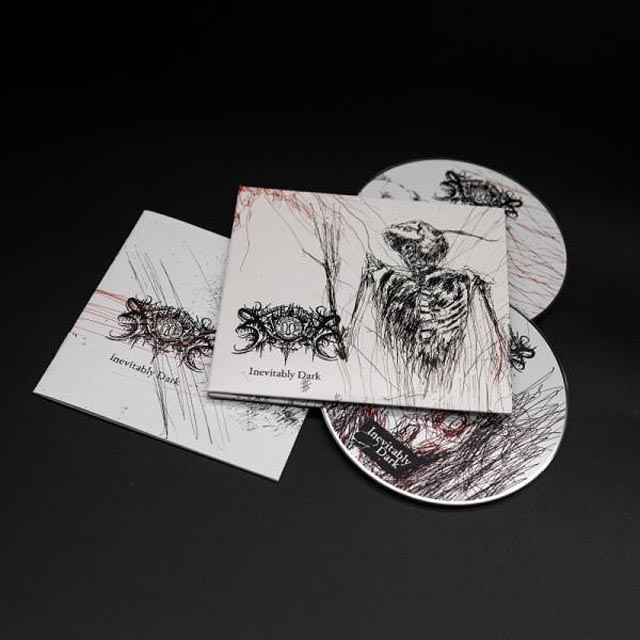
Perfectly said. I love the way you’ve described your creative process as exorcising demons and whatnot. I read that, at first, your hands were paralyzed, and it was extremely difficult for you to draw, and you draw in high contrast because your vision is affected. So, yes, it’s, of course, beyond inspiring how you’ve transfigured your pain into beauty and converted your struggles into pure art.
I have a degenerative eye condition. My left eye doesn’t see very well, and it was the main problem. And, of course, my hands don’t work properly. I somehow rebuilt my drawing technique to create something from my sufferings more than just a scratch. In the beginning, it was a very painful experience, and you can imagine that I was surrounded by nobody. I was alone with pain. I even have such words: “Pain will be there anyway. And if pain will be there anyway, you need to do something with that, not just hold it inside yourself, but try to use it.” That’s my pain-philosophy. And if you buy the book and look at the backside, you will see: “You don’t choose pain, pain chooses you.” I think that this is the depressive black metal philosophy: “If you can’t escape, try to use it.” Many people tell me that I’m a very positive dark artist, but I’m not. Darkness is not a positive experience, no.

What should we know about your work with Playboy?
With Playboy, it’s very simple. With my erotica experience, it was a little bit different. I was a big fan of Giger’s erotica. Through Giger, it first came to my attention that dark artists can create in the erotic sense. And then, I forgot about it. It was just a plan, but I didn’t even try to do anything like that. I was still very conservative — dark art and black metal were a revelation for me. And erotica, back then, it was too much even for me. So, nobody even asked me about that. Then one day, I believe it was the gallery in Switzerland that owns Giger’s collection, his photos… They asked me if I wanted to create erotic art. It was shocking. “What kind of erotic art can I do?!” I was in such a position that bands didn’t text me, labels didn’t text me, no one. I was like: “Okay, so if nobody will ever call me again, I will do some type of different art.” It became an obsession. After darkness, it was kind of like a relief that I could mix different stuff. And I had this show in Zürich. It was a miracle for me. I thought: “Well, maybe I will send some of my portfolio to Ukrainian Playboy.” And they took it. I’m really thankful for that experience. So, thank you to Playboy Ukraine for their support. It happened very fast. That’s all.
Sewn Together is obviously a really wonderful model and singer. What would you like to say about her and maybe some of your other collaborations with peers?
We’re friends, and we support each other. My first muse was in Ukraine. I hope that I will have another book in the future or some collaboration with Christian. I have a bunch of projects around me, but you need to find the right place and the right time. Yes, it would be great if I could make some other type of book, something way different than dark art.
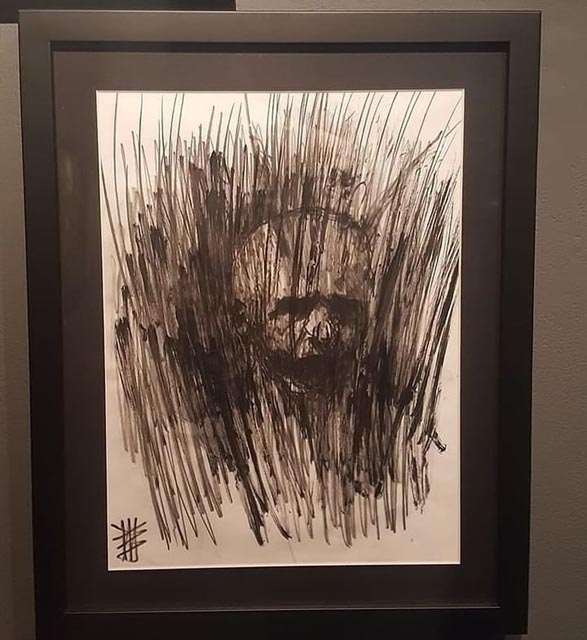
Speaking more of Sewn Together, you’ve portrayed her with lipstick. I understand that you draw with lipstick quite often, and I love the effect that it gives to your pieces.
Sometimes, yes. I use lipstick for my art. It’s very funny why I use lipstick. It’s because I always work like crazy. Especially at night, I can even forget to change my pens or ink brushes, and sometimes the ink brush is empty, and I can’t find any new ones. Lipstick was around me, and I tried. It’s very complicated, but I like it.
This might sound a bit silly, but do you have any favorite lipstick brands that really work for you, because lipsticks can have very different textures? So, for example, I use YSL Rouge Pur Couture because it’s very thick.
Well, I have a bunch of independent lipsticks from my friends. My friend Justin Mayfield has a brand called Adveket that I really enjoy using and highly recommend. Otherwise, I like Tom Ford.
That’s a perfect answer. Tom Ford is such an icon, and he was one of my heroes growing up. Along similar lines, the ring that you designed for Intenbris was absolutely stunning.
I created that ring for my first model: It was a special dedication to my first muse, Koshka Black, who I worked with in Ukraine. It was like putting pain onto the silver — if my pain had a texture, it would be on silver.
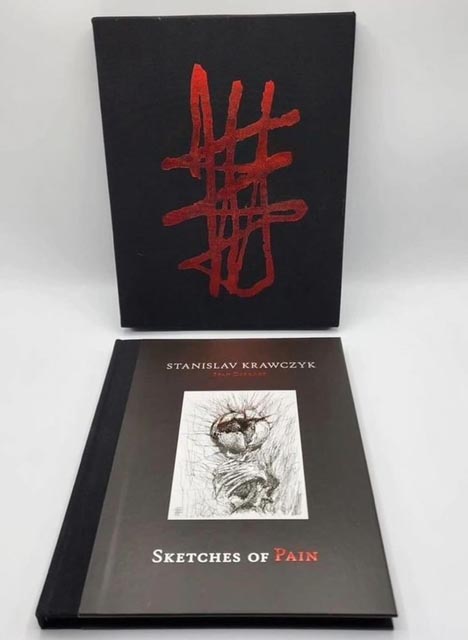
If we could rewind to Ukraine for a moment, please fill me in on your experience in art school.
I was in all of these hospitals, and, of course, I was rejected by society, denied the opportunity to somehow communicate with some people or to have something of my own. My mom was a big fan of my drawings, and they found a teacher and a school for me. But if the typical term for school was like 2 or 5 years, I was so rejected by society that I spent 10 years in art school and college. So, I was forgotten in this place where I was surrounded by sculptures, by drawings, by oils. Michelangelo’s David and Alexander the Great were my main friends because I never communicated with anyone, just them. But, of course, I hid my Giger books from teachers. They never supported that stuff. I have this typical classical education, but I rebuilt my style: I think it’s like Vincent’s experience. I’m not into watercolor or oils. I’m more into ink and pen. So, I’m more of a draftsman than a classical artist. I’m more into the sketch. I’m a sketch addict. I’m drawing everywhere and every day. My day begins with drawing, my day ends with drawing. I even forget sometimes to sleep or eat. It’s sometimes unstoppable.
To ask a different type of question: Are there any authors that you have a special connection with and whose writings you believe bear a strong relation to your art? For instance, your work makes me think of Georges Bataille, but that might just be because he’s one of my favorites.
It’s Clive Barker. If you ask me what moves me, what kind of books I read, it’s Clive Barker. It’s very important for me that Clive Barker, I believe, has my drawings. He saw my drawings, and I was at his studio. That’s because Clive Barker is a visual artist too. And, again, that is very important, that I have a connection with my idols. Yeah, Clive Barker is my main inspiration. Cabal is my favorite. It’s in my head all the time, especially the romantic view on evil. It’s about me. Maybe I’m not so gentle and so romantic, but all this eroticism, it’s from him.

And as you’ve said on other occasions as well, it’s cool that you’ve been able to become friends with basically all of your idols.
Yeah, I have depression, sadness, and loneliness. All of this is very typical for dark artists. I speak with Scott, and Scott told me where he lives in Los Angeles with palms and all this. But even in light, even on such nice sunny bright days, we find some sort of darkness, some sadness. And I never believed when I had this depression that I would ever-ever somehow connect with my idols. I never believed that someone could even look at one of my pieces. I never believed that I would have a show in Germany, in Switzerland, never. It was my shock-revelation. And about this book, it wasn’t even in the plan. And everybody who helped me in this direction, who helped me grow, thank you.
(Visit Stan’s webshop here, his GoFundMe here, and his Instagram here.)

